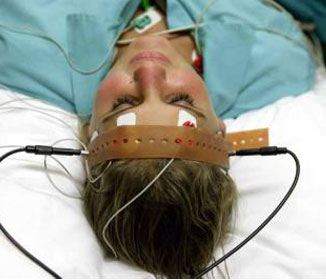As evidence supporting the use of
electroconvulsive therapy (ECT)
to treat patients with depression
and other psychiatric illnesses continues
to grow, myths about this treatment
persist. In light of these myths, patients
might be reluctant to receive ECT. As clinicians,
we need to educate patients about
the safety and effectiveness of this treatment.
Here are 10 of the most commonly
held myths about ECT, and why each is a
misconception.
1. It is a barbaric treatment. ECT is conducted
in a controlled medical environment,
either during a hospitalization or as
an outpatient procedure, by a team, consisting
of a psychiatrist, anesthesiologist,
and nurse. Patients receive a short-acting
intravenous anesthetic to ensure that they
are unaware of the procedure, and a muscle
relaxant to help prevent physical injury.
Vital signs and brain waves are monitored
throughout the procedure, which typically
lasts 15 to 20 minutes. Patients remain
relaxed, are unaware that they are having a
seizure, and experience no pain. Following
ECT, the patient is taken to a recovery area,
where he or she is closely monitored as the
medications wear off.
2. It causes brain damage. Studies using
MRI to look at the brain before and after
ECT have found no evidence that ECT
causes negative changes in the brain’s
structural anatomy.1
To the contrary, there
is evidence that there is neuroplasticity in
the brain in response to ECT, and the neurotrophin
brain-derived neurotrophic factor
also may be increased.2,3
3. It causes permanent memory loss.
ECT can result in both anterograde and
retrograde memory impairment; however,
anterograde amnesia typically lasts only
days to weeks. Retrograde amnesia is much
less common, but when it occurs, it tends
to be a loss of memory of events that took
place in the weeks leading up to and during
treatment. Using an ultra-brief (as opposed
to standard brief,) pulse, as well as right
unilateral (as opposed to bilateral) electrode
placement substantially reduces the risk of
cognitive and memory adverse effects.4
4. It is a treatment of last resort. Typically,
ECT is used for patients who have not
responded to other interventions. However,
ECT can be used as a first-line treatment
for patients if a rapid or higher likelihood
of response is necessary, such as when a
a patient is suicidal, catatonic, or malnourished
as a result of severe depression.5
5. It only works for depression. Evidence
shows ECT is efficacious for several psychiatric
conditions, not just unipolar depressive
disorder. It can effectively treat bipolar
depression, mania, catatonia, and acute
psychosis associated with schizophrenia
6. It is not safe. Death associated with
ECT is extremely rare. A recent analysis
estimated that the rate of ECT-related
mortality is 2.1 deaths per 100,000 treatments.
In comparison, the mortality rate
of general anesthesia used during surgery
has been reported as 3.4 deaths per
100,000 procedures.8
Evidence also suggests
ECT can be safely administered to
patients who are pregnant.9
